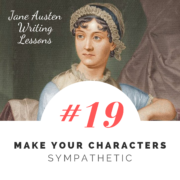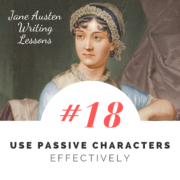Full Sized Blog Element (Big Preview Pic)
#19: Make Your Characters Sympathetic
/0 Comments/in Jane Austen Writing Lessons/by Katherine Cowley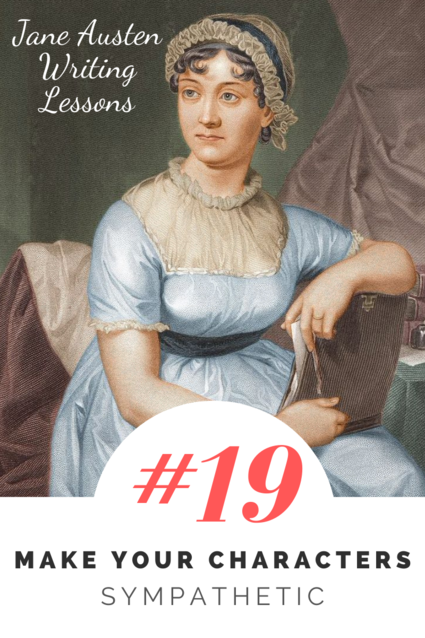
In a letter to her niece Fanny Knight in March 1817, Jane Austen mentioned that she had a new novel, nearing readiness for publication: “You will not like it, so you need not be impatient. You may perhaps like the Heroine, as she is almost too good for me.”
Jane Austen died a few months after her letter, but her family had the novel published posthumously. That novel is Persuasion, and its heroine, Anne Elliot, is—despite Austen’s self-deprecating comments—a true gift to readers.
Anne Elliot is a prime example of a sympathetic character. She broke off an engagement with Captain Wentworth ten years before the start of the novel, and now he is back in her life. She wonders—and we wonder, with just as much desperation and longing—if she will have a second chance with him.
A sympathetic character is a character who we feel compassion for and connection to. It is a character that we find likeable.
The Oxford English Dictionary (also known as the OED) is over 21,000 pages long and is probably the most massive English dictionary in the world. It is also my favorite dictionary (yes, I have a favorite dictionary). Note: I don’t own a physical copy—that would be insane, but it is online and accessible through many library subscriptions!
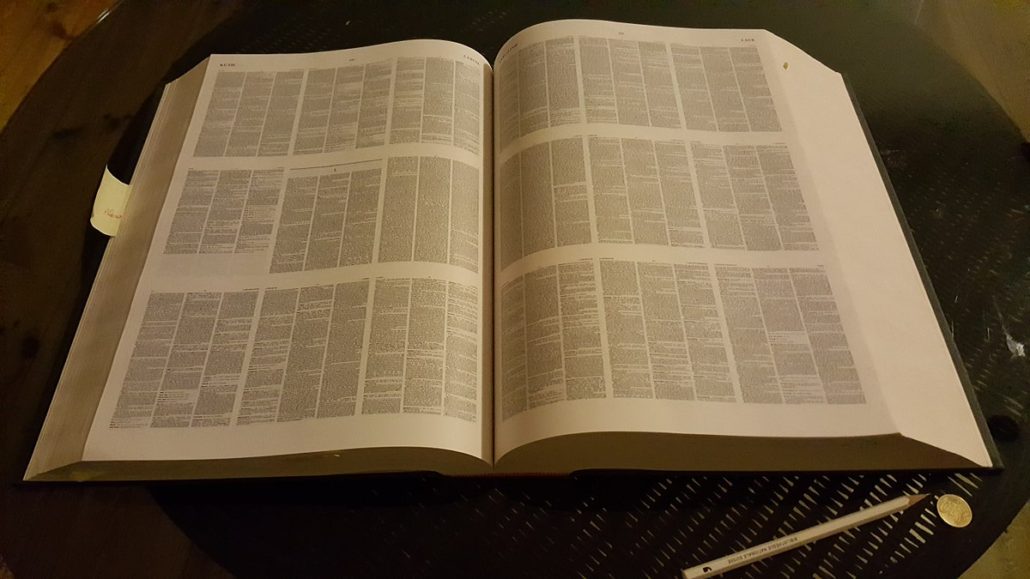
Image of the Compact OED from Aalfons. The normal version is almost two dozen huge books.
The OED goes into great depth in defining the word sympathy. We’ll look at some of the OED’s definitions of sympathy, and then use examples from Persuasion to examine how to use these definitions to create sympathetic characters.
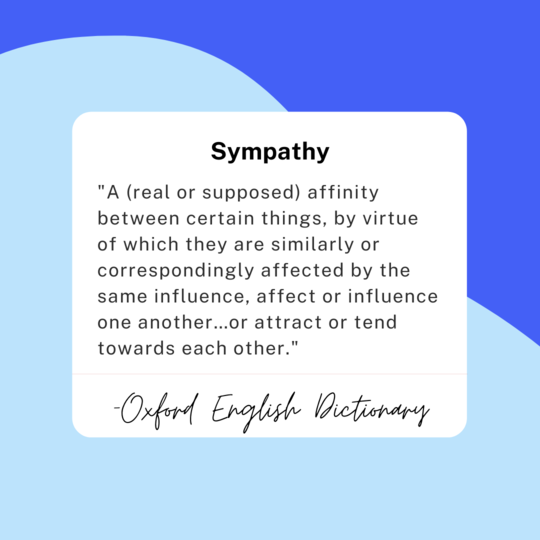
The OED cites an example from 1601 which talks about the sympathy between iron and loadstone—in other words, sympathy is like a magnet and a paperclip: there is some inherent similar quality which creates an attraction between them.
One of the main reasons we turn to literature is because stories create feelings of sympathy. We see ourselves in literature. Stories changes us. We become part of the experience in the text, and the text becomes part of our own experience.
In the latter half of Persuasion, Anne is living in Bath with her father and sister. She attends a concert with them, and Captain Wentworth is present. Anne and Wentworth have a nice conversation before the concert, but during the concert Anne is seated next to another man who is interested in her, Mr. Elliot. We see ourselves in Anne as, during the concert, she tries to catch Wentworth’s eye, but is unable to. We feel Anne’s frustrations with Mr. Elliot and his flirtation; like her, we cannot truly be interested in him. We are one with Anne and agree with her motives and her actions when she manages to change seats partway through the concert so she is at the edge of a row and has the hope of talking to Wentworth.
Captain Wentworth leaves before the concert is over:
He must wish her good night. He was going—he should get home as fast as he could.
“Is not this song worth staying for?” said Anne, suddenly struck by an idea which made her yet more anxious to be encouraging.
“No!” he replied impressively, “there is nothing worth my staying for;” and he was gone directly.
Jealousy of Mr. Elliot! It was the only intelligible motive. Captain Wentworth jealous of her affection! Could she have believed it a week ago—three hours ago! For a moment the gratification was exquisite. But alas! There were very different thoughts to succeed. How was such jealousy to be quieted? How was the truth to reach him? How, in all the peculiar disadvantages of their respective situations, would he ever learn her real sentiments? It was misery to think of Mr. Elliot’s attentions. – Their evil was incalculable.
Anne is an especially sympathetic character in this scene.
A character is sympathetic when we as readers can:
- Understand the character’s perspective
- This scene is in Anne’s point of view, and with Austen’s presentation, it is easy to understand Anne’s perspective on the situation, her history with Wentworth, and her desires. We are aided by internal thought as the narration slips into Anne’s mind and thoughts.
- This scene also helps us understand Wentworth’s perspective. He is not the point of view character, but his perspective is revealed through his dialogue and behavior, and we can understand him as a person and feel a shared humanity with him.
AND/OR
- Relate to the character’s motives and actions
- In this scene, we can relate to Anne’s motives, particularly her desire to fix things between her and Wentworth.
- Her actions are also actions that we feel like we would take if we were in the same situation.
Note that there are plenty of times when we might not relate to the character’s motives and actions—personally, I do not relate to Anne’s actions as much during the first half of the novel, when Anne avoids attempting to have an in-depth conversation with Captain Wentworth. But even if I don’t agree with her actions (or in other cases, her motives) I can understand why she’s making her choices, so I can still maintain a level of sympathy for her.
Additional techniques for creating sympathetic characters
Now we’re going to look at three more definitions of sympathy from the OED, which will help us understand additional techniques and approaches which can be used to create sympathetic characters.
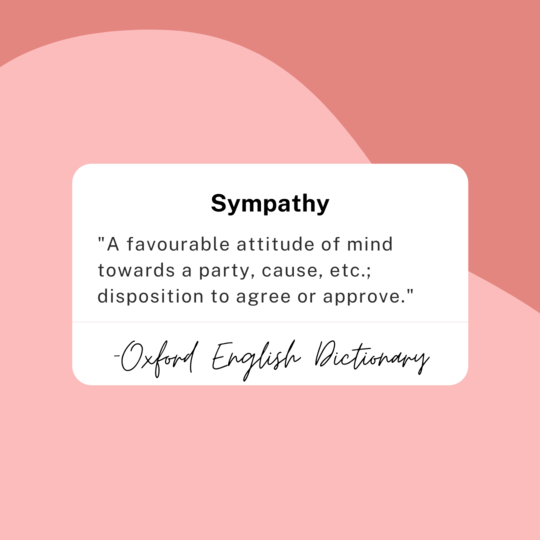
In the screenwriting book Save the Cat, Blake Snyder talks about the need for the audience to feel sympathy for the main character early on. He calls this the “save the cat” moment; in some films, the main character will literally save a cat, and this will instantly endear them to us. Basically, we feel favorably when people take actions that we can agree or approve of, and in general, as people, we approve of acts of kindness, we approve of someone doing something good or self-sacrificing. We like kind people.
Near the beginning of Persuasion, Anne has a strong “save the cat” moment. Anne’s nephew is ill, and this will prevent her sister from going to eat dinner at another family’s house. Anne’s sister very vocally and desperately expresses her desire to attend the dinner—she suffers from what today we like to call FOMO, fear of missing out. Anne has even better desires than her sister for attending the dinner—Captain Wentworth will be there, and Anne has not seen him in the ten years since she broke off their engagement.
Anne makes the decision to take care of her nephew so that her sister and brother-in-law can go to the dinner:
She knew herself to be of the first utility to the child; and what was it to her, if Frederick Wentworth were only half a mile distant, making himself agreeable to others!
Having a save the cat moment can help us sympathize with not just with a main character, but with any character. If, for example, you want us to have sympathy and understanding for an antagonist’s motives (which can be a powerful tool to make them a rounded, full character), have them do something good or kind for another character.
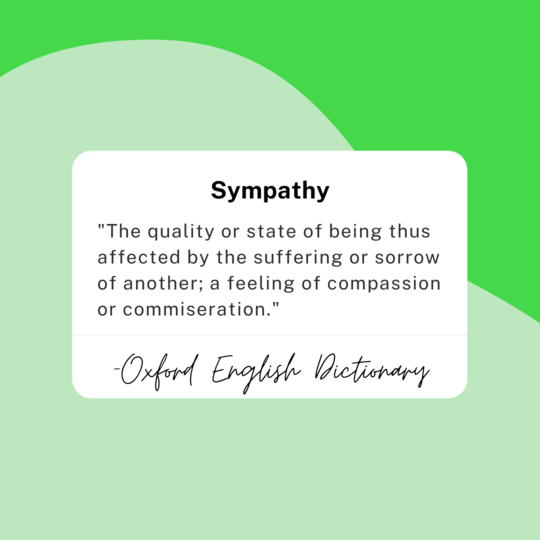
I talked about this in the post on passive characters—we sympathize with Fanny Price in Mansfield Park because of the poor way others treat her. We sympathize with suffering (though if there is too much suffering or a character feels pitiable, sometimes we find it too hard or uncomfortable to sympathize).
We also like to root for underdogs, for people who have to prove themselves. Anne Elliot is undervalued by her father and sisters; in the opening scenes of the novel, they dismiss her ideas and advice. We also see Anne suffering when Wentworth pursues another woman, and we feel for Anne in these moments.
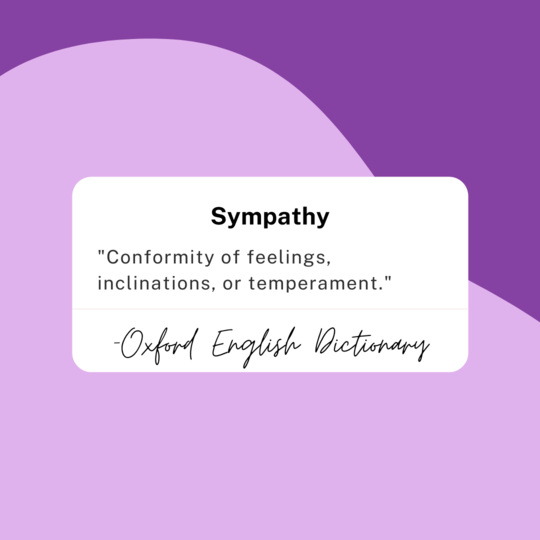
Conformity is about norms, and we sympathize with characters within certain norms. We sympathize with characters that meet our expectations of behavior and temperament. In literature, characters are often better than ourselves: they are a little more consistent, a little more understandable. They can be better examples of certain virtues or ideologies.
Yet if characters are too good or too perfect or too smart or too capable, we stop sympathizing with them. Just as in real life, we often don’t like people who seem too perfect; we feel more distance between us and characters that seem so much greater or better than us, because they are not like us.
Sympathetic characters must be like us: they must have weaknesses. They must try and they must fail, repeatedly, because it is trying and failing and trying again that makes us human.
Anne’s weaknesses are plenty: she is at times too easily persuadable. She veils her emotions. She does not stand up for herself. And because of this, she feels real and we sympathize with her struggles and failures and attempts to achieve her goals.
The Spectrum Between Sympathetic and Unsympathetic Characters
Like with active and passive characters, there is a spectrum between sympathetic and unsympathetic characters, and characters typically move up and down this spectrum over the course of a story. At times characters—even make characters—are predominantly unsympathetic. Next week I’ll focus on effectively using unsympathetic characters.
Whether your character is mostly sympathetic or only occasionally sympathetic, it helps the reader connect to the story. We like spending time with people we like, with people we have sympathy for. We root for them. And we are excited to travel with them on their journeys.

Exercise 1: There is a great Writing Excuses podcast episode on sympathetic characters (which I encourage you to listen to!). In addition to some of the points covered in this writing lesson, they address several other techniques that can help create sympathy for characters:
- Character self-awareness
- Humor
- Vulnerability and openness
Take a character from a book or film that you find sympathetic, and examine what specifically makes them sympathetic, whether it’s the point of view, suffering, backstory, imperfections, relatable motives, humor, or other principles entirely.
Exercise 2: Write a brief scene of a character doing something that we generally find unsympathetic (i.e. taking a toy from a young child, ripping up a student’s paper, etc.). Write this scene in a way that will make a reader feel sympathy for this character.
Exercise 3: Take one of your characters that is generally sympathetic and write a brief scene that makes them less sympathetic. Then, take one of your characters that is generally unsympathetic and write a brief scene that makes the more sympathetic. What did this achieve? What would the impact of this scene be on an audience? Does this scene teach you anything about your own characters?
#18: Use Passive Characters Effectively
/1 Comment/in Jane Austen Writing Lessons/by Katherine Cowley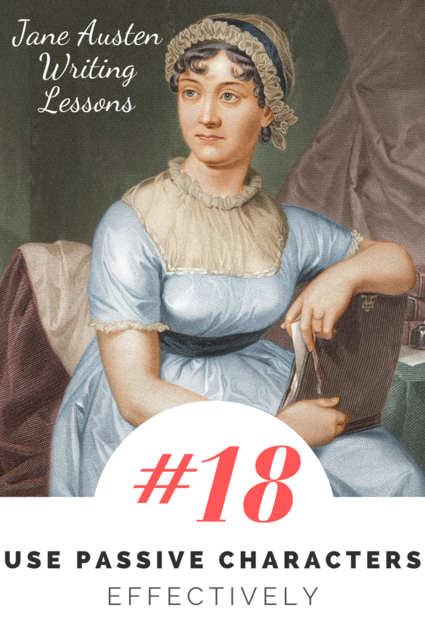
In Pride and Prejudice, Charlotte Lucas makes the decision that Elizabeth refuses: she marries Mr. Collins. Molly Greeley’s recent novel, The Clergyman’s Wife, is a compelling story which features Mrs. Charlotte Collins three years later. Charlotte is rather unhappy in her marriage, and begins the story as a rather passive character: she suffers in silence, she struggles to know what to write in her letters to Elizabeth, and she follows the edicts of Lady Trafford and Mr. Collins.
Mr. Collins has never visited or shown real concern for those living in his parish, and neither has Charlotte. But Charlotte decides she wants to change—she decides she wants to do something for those around her, so she visits the elderly Mr. Travis, and then the solitary Mrs. Fitzgibbon. As a result of her visits, Charlotte is criticized by both her husband and Lady Catherine. Yet Charlotte holds her own, and justifies her actions in a way that does not allow them to prevent them in the future.
The look Lady Catherine bestows upon me puts me in mind of the looks she used to give Elizabeth, when my friend dared to speak her true thoughts to her ladyship upon visiting me in the early days of my marriage.
Charlotte’s action is small but it feels heroic, and it shifts her from being a rather passive character to becoming a more active one.
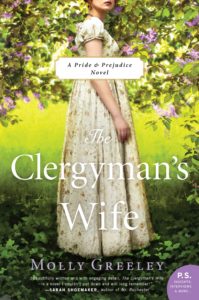
As discussed in the previous post on active characters, there is no true dichotomy between active and passive characters, but rather, it is a spectrum, and many characters shift to different points of this spectrum throughout the course of the story. At times it may even be useful to keep a character relatively passive for the entire story.

Yet choosing to write a passive character—whether for a portion or the entire novel—is challenging: it is easier to effectively write an active character than a passive one, because interest and empathy is automatically given to active characters, and must be gained in other ways by passive characters.
Jane Austen’s novel Mansfield Park features a generally passive character: Fanny Price.
As a young child, Fanny is brought to live with her aunt and uncle, the Bertrams, at Mansfield Park. Now that she is older, the Bertrams decide Fanny will live her terrible Aunt Mrs. Norris. Fanny is surprised, and this reaction shows, but she does nothing to try to change her situation. She complains a little to her one confidant, her cousin Edmund, but she does nothing active to change her fate. She is saved by outside forces: Mrs. Norris does not want her.
Later, the old horse she uses for exercises dies. This is something that happens to Fanny, and Fanny does nothing—in fact, because of her precarious situation as someone who has been taken in by the family, there is nothing she can do without risk of losing her home.
Edmund eventually notices what this loss has done to Fanny, and he takes it upon himself to put things to right. He is the active character in this situation, not Fanny.
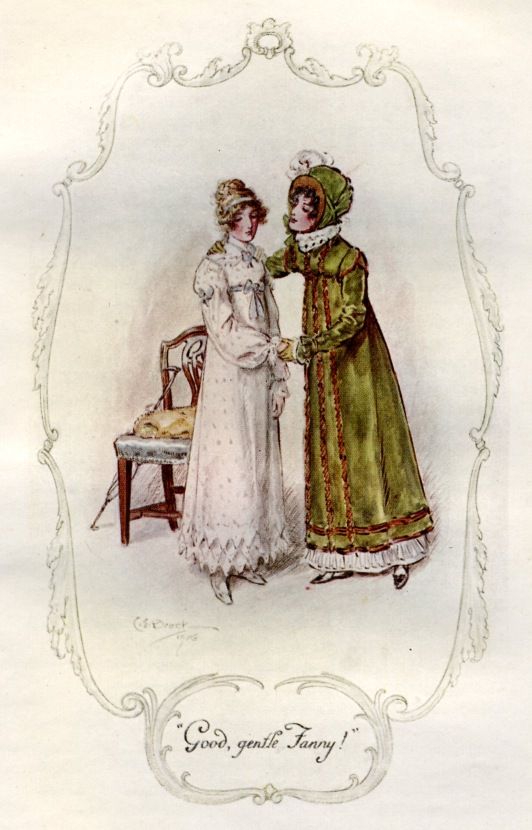
1908 illustration of Fanny Price by C.E. Brock (in public domain)
After the arrival of the Grants and the Crawfords in the area, the narrator even comments on Fanny’s passivity:
And Fanny, what was she doing and thinking all this while? and what was her opinion of the new-comers? Few young ladies of eighteen could be less called on to speak their opinion than Fanny.
The number of people who claim Mansfield Park as their favorite Austen novel is a smaller number than those who love her other novels, and many readers find Mansfield Park a challenging book to read. I would argue that this is in part because Fanny is a passive character for much of this novel, and this makes it less accessible for some readers. Fanny also does not have a strong, forward-moving want or desire: at the beginning of the novel, Fanny wants to be left alone—she wants peace. And she does not take decisive actions to achieve this. Yet the novel is brilliant on so many levels, and Fanny’s character is an essential aspect.
In general, readers like forward motion and are drawn to characters with strong desires who reach for them. Readers can lose patience if it feels like the characters or the story is stalled.
One approach is to make passivity a part of the journey, as Molly Greeley does in The Clergyman’s Wife. By page fifty, Charlotte has taken a number of steps to being more active.
In Mansfield Park, it is much longer before Fanny becomes an active character, yet Austen uses other techniques to maintain interest and forward movement.
One of the ways Austen does this is by making Fanny’s character needs so great. At the beginning of the novel, some of Fanny’s basic survival needs are not being met: the Bertrams do not even allow her a fire in her rooms during the winter. (I am still pretty angry at Fanny’s relatives for this!) She also needs basic security: at any point, she knows that she could be thrown out of her home without warning, and this is threatened by her aunt Mrs. Norris even when Fanny expresses distaste for acting in a play.
If we move further up Maslow’s hierarchy of needs, which I discussed in lesson 15, Fanny’s needs continue. Her psychological needs are great: she needs kindness, she needs acceptance, she needs friendship. (At the start of the novel, Edmund is her one friend, but plenty of his behaviors throughout the novel cause her further anxiety). Finally, Fanny needs love.
Fanny’s needs create sympathy from the reader: we want her situation to improve.

In the long-running (and Hugo award-winning) podcast Writing Excuses, author Brandon Sanderson talks about an approach to characters that he calls character sliders. For him, there are three sliders, or components of character:
- Sympathetic/Relatable/Nice
- Active
- Competent
These sliders are like sound mixing: the three combine to create characters. One slider may be set low and then move higher; another slider component may stay at a certain level; one of the sliders may start high and then lower over the course of the novel. If one of the sliders is really low—for example, a character is very passive—then the character should probably be higher at one or both of the other sliders. Typically, the sliders do move up and down throughout the course of the novel.
In Mansfield Park, not only do we sympathize with Fanny because of her situation, but because she has competence in a particular area: her sense of morality and her innate goodness. Because she is sympathetic and competent in a particular area, we like her as a character even though she not often active.
A few other points to consider when working with passive characters:
- If your main character is passive, other characters and events must create forward movement in the story. For example, in Mansfield Park, forward movement is created by the visit to Mr. Rushworth’s estate, the decision to stage a theatrical, and the engagement of Maria Bertram.
- Everyone has moments when they are passive. Consider how you can use this to help your character on their internal and external journeys.
- If the main character is externally passive, their thoughts and interior emotions can be revealing and insightful. For example, as her cousins their friends began to plan the theatrical, Fanny’s internal thoughts engage the reader and provide additional insight.
Fanny looked on and listened, not unamused to observe the selfishness which, more or less disguised, seemed to govern them all, and wondering how it would end. For her own gratification she could have wished that something might be acted, for she had never seen even half a play, but every thing of higher consequence was against it.
- Finally, a passive character can be a thematic choice or provide social commentary. Fanny is a woman who has almost no choices, and whose situation makes it impossible for her to be truly active. Yet through it all, she does find inner strength, and she does ultimately assert herself, sometimes with dire consequences. Many readers who love Mansfield Park see part of themselves in Fanny; they admire her quiet strength, and find her slow resistance both inspiring and empowering, for there truly are many life circumstances where we have no control, no power.

Exercise 1: Draft a short scene using one of your characters you’ve already developed, or an entirely new character. Have the character change how passive or active they are throughout the scene. They could:
- Start the scene active and become more passive
- Start passive and then become more active
- Start passive and then become even more passive
- Move back and forth several times between passive and active
Exercise 2: Choose a character from a book or a film that you typically think of as an active character. Find at least three examples in their story where they are more passive than normal or become a completely passive character. What is the impact of these moments on the story?
Exercise 3: If you are outlining, plan a point in the story where you want your character to be passive. If your character is generally active, one common place to make your character more passive is at the moment before the climax, where it seems like all is lost (this is also called “the night of despair”).
If you are revising a story, find a point where your character is passive (or more passive than in the rest of the story). How can you increase sympathy for the character at this point? Is there still a sense of forward movement in the story? What do we learn from the character’s thoughts and emotions? Is the character’s passivity a conscious choice or forced upon her? How could this passive scene be used to strengthen the theme of the story? Revise the scene to strengthen the impact of using a passive character.

